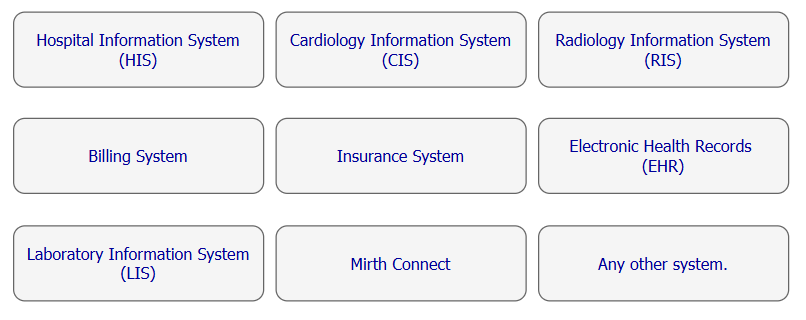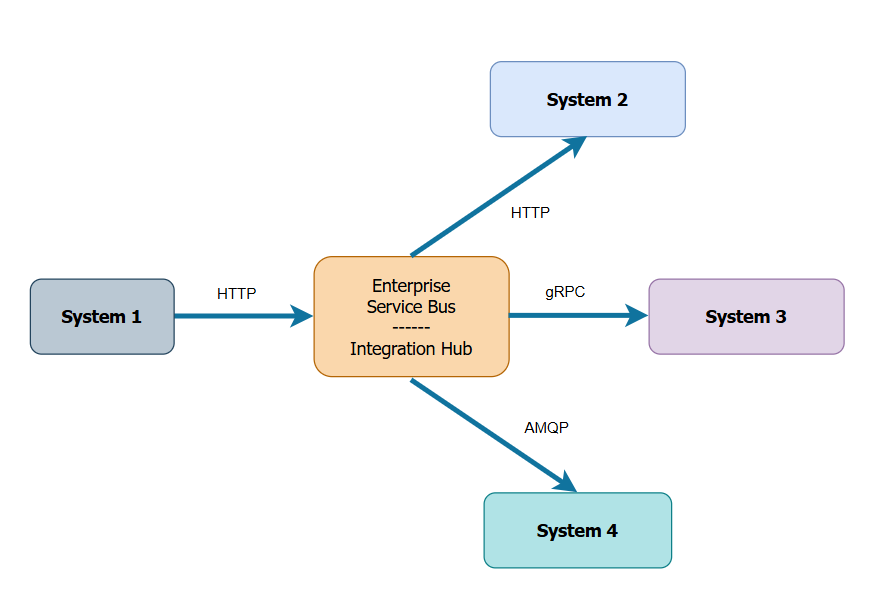Enterprise Service Bus (ESB) - Integration Hub
Enterprise Service Bus (ESB) / Integration Hub
Imagine a hospital where different systems Radiology System, Cardiology System, Electronic Health Records, and Billing System need to exchange information with each other.

The first thing we notice is the fact that particular system has to have all the knowledge of target system to to satisfy that request. System that wants to talk to any other system must know its protocol. System also must know what format these messages shall be used for exchange, and many other things.
Now, instead of each systems calling each other separately which is messy and slow, they all send their messages to a central receptionist who knows exactly where to send each message. This receptionist ensures smooth and organized communication between all other systems.
An Enterprise Service Bus (ESB) is like a central receptionist that helps different applications talk to each other smoothly. Instead of each application connecting directly, they all connect to the ESB, which manages and routes their messages efficiently. Think of it like a traffic controller for data, ensuring everything gets where it needs to go without confusion. This is where Enterprise Service Bus (ESB) / Integration hub comes in to picture.

The relevance of Enterprise Service Bus has changed significantly with the rise of microservices and event-driven architectures, but it has not been completely replaced. Whether ESB is still used or not depends on the enterprise’s needs, architecture maturity, and existing infrastructure.
Many large enterprises, especially in industries like banking, healthcare, and manufacturing, still rely on ESBs. These companies have monolithic applications and legacy systems that need integration, and ESB provides a centralized, standardized way to connect them
In cloud-first, microservices-based architectures, ESB is often seen as a bottleneck because it introduces centralized control, whereas microservices favor decentralization. Modern API gateways, event-driven architectures (e.g. Kafka, RabbitMQ) provide more scalable and loosely coupled alternatives. Instead of a centralized ESB, modern systems use API gateways (e.g. Apigee, AWS API Gateway) for routing, authentication, and load balancing. For asynchronous communication , enterprises move towards event streaming (e.g. Kafka, RabbitMQ, Azure Event Hub), allowing services to communicate without direct dependencies.
Popular Integration Engines & Middleware Tools
- Apache Camel (open-source, lightweight)
- MuleSoft (enterprise-grade, widely used)
- WSO2 ESB (open-source and customizable)
- IBM Integration Bus (enterprise-level, supports legacy systems)
